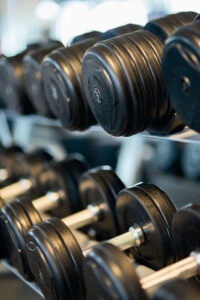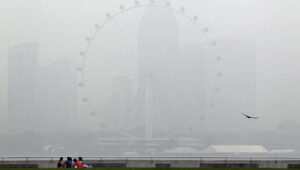Protect yourself: Wash your hands

You have probably been advised that regularly washing your hands is essential. People wash their hands when they are visibly dirty, but tend to forget that they can harbour invisible particles even when they seem clean. Disturbingly, only 60% of women and 38% of men clean their hands with soap and water after using the restroom.
So why is hand washing a requirement? Can it prevent you from being sick?
Frequent hand-washing is one of the most effective ways to avoid getting sick and spread illnesses. Your hands pick up many germs during your everyday life operations, through a hand shake, when working or cooking. You can easily transfer them to other people who, in turn, can spread them to others, and so on. Germs on your hands will multiply on your skin if not washed away. People touch their face several times per hours without realising it, and with dirty hands, harmful bacteria can enter your body through the nose, mouth, and eyes to make you sick. By washing hands, you reduce the spread of germs and protect yourself.
According to the Centers For Disease Control and Prevention, “washing hands with soap and water could reduce diarrhoeal disease-associated deaths by up to 50% and reduce the risk of respiratory infections by 16%”.
Is soap necessary to wash your hands? Does soap kill germs?
Using soap is the best way to ensure safe hands. Compared to soap, water only removes a negligible portion of germs on your hands
The product acts as an emulsifying agent. It suspends oil, dirt particles and germs from your skin. By rubbing your hands, you complete the action of the agent and allow the particle to be easily removed. It is the same as when you clean your teeth. When using toothpaste, you have to brush your teeth to clear away bacteria and traces of food, otherwise it won’t be effective. The longer you rub your hands, the more germs will be washed away when rinsing under water.
Plain soap only removes germs. [Antibacterial soap], on the other hand, contains antibacterial agents to ensure germs free hands, necessary in certain setting like in healthcare utilities.
How to wash your hands?
“95% of people don’t wash their hands properly”.
Most of the people don’t wash their hands long enough; it should be done for at least 20 seconds. The World Health Organization recommends the following steps to ensure safe hands:

Wet your hands with clean, running water. The temperature doesn’t influence the effectiveness of hand washing. Turn off the tap, and apply soap.
– Rub your hands with soap and don’t forget areas like the nails, the back of the hands and between the fingers.
– Scrub your hands for at least 20 seconds, you can sing ‘happy birthday’ twice while rubbing to make sure that you do it long enough.
– Rinse your hands under clean water.
– Use a clean towel or a hand dryer to dry your hands. Dry hands are harder for germs to multiply on.
When to wash your hands?
When we think about when to wash hands, the first thing that pops up in the mind is after using the toilet. But it should also be done in those situations:
– Before, during and after handling food, cooking and before eating. Many foodborne illnesses could be avoided with a good hand washing.
– Before and after caring for a sick one;
– Before and after treating a cut or wound. Bacteria enter the body through cuts and wounds.
– After using the toilet;
– After changing diapers;
– After blowing your nose, coughing, or sneezing. A single sneeze can spread more than 100 000 germs around. Cover your mouth when sneezing and wash your hands after.
– After touching an animal,or its waste or feeding the latter. Animals carry germs transferrable to humans.
– After touching garbage.
What to do if soap and water aren’t available?
Hand Sanitizers are a good alternative when soap and water aren’t available. Choose a sanitizer containing at least 60% of alcohol. They kill most of the germs and are effective if your hands aren’t visibly dirty.
Sources:
Isd423. 2015. BREAK THE CHAIN. [ONLINE] Available at: http://www.isd423.org/break-the-chain/.
CDC. 2010. Hygiene Fast Facts. [ONLINE] Available at: http://www.cdc.gov/healthywater/hygiene/fast_facts.html.
About Education. 2015. How Soap Cleans. [ONLINE] Available at: http://chemistry.about.com/od/cleanerchemistry/a/how-soap-cleans.htm.
World Health Organization. 2009. Hand Hygiene: Why, How & When?. [ONLINE] Available at: http://www.who.int/gpsc/5may/Hand_Hygiene_Why_How_and_When_Brochure.pdf.







